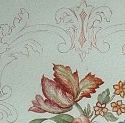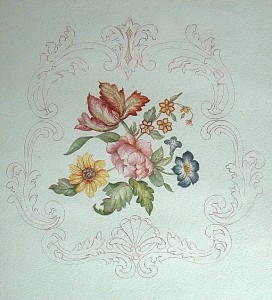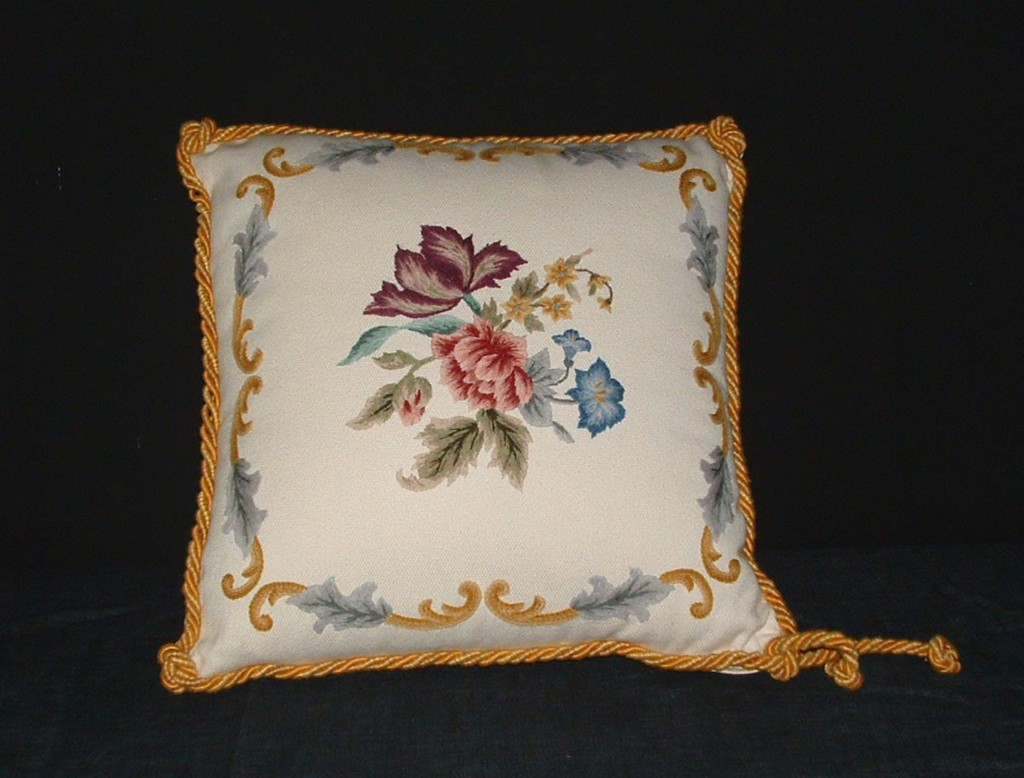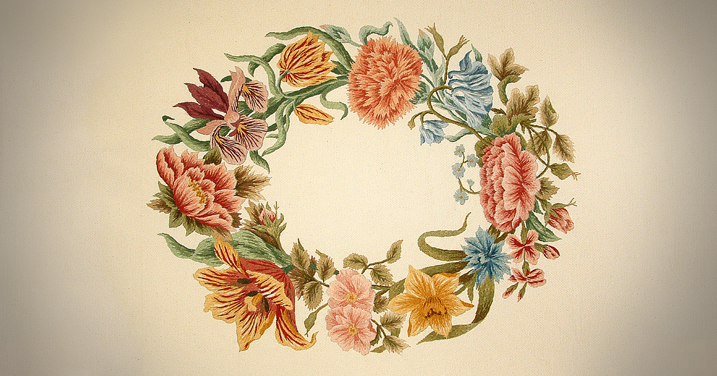 The embroidery Bandera began to spread in the seventeenth century in the royal residences of the Savoy, castles, in country villas and hunting lodges of the nobility.
The embroidery Bandera began to spread in the seventeenth century in the royal residences of the Savoy, castles, in country villas and hunting lodges of the nobility.
The reasons for the designs were initially taken up by the furniture in baroque and rococo style of these dwellings, later they were inspired by the most famous cabinetmakers, marquetry and architects who worked at the Royal House, such as Peter Piffetti, Luigi Prinotto, Giuseppe Maria Bonzanigo, Benedetto Alfieri. There were also artists who lent their work to prepare the cardboard base for embroidery, come Claudio Francesco Beaumont.
| Following this remarkable and ancient tradition, our Association continuously growing archive of designs available. In particular, our president, Anna Gamage, the true soul of the many activities to protect and spread the knowledge of this embroidery technique, inspired by scenic elements that solicit his artistic sense, as wall hangings, coats of arms, various decorations, to obtain a new pattern which is then made by yourself or by the teachers of the school, before being exposed to events and proposed to students. |
 For example, watercolor on the right was painted by Felicita Giunipero Rocchia, painter on canvas and ceramic. The Artist, who was a founding member of our Association and author of our first brochure, lo ha donato, together with other works, Association just as a suggestion for embroidery. Anna Ghigo turned it into design, taking only the elements that hark back to the historical tradition of embroidery Bandera and modifying others. In the water-seen a tulip, peony bud, of bluebells and small yellow flowers that have been preserved; but we also see a gerbera, that goes beyond the traditional flowers Bandera, and is therefore been replaced by a bud. Even the edge, assuming that watercolor was quite full-bodied, has been reduced to a greater emphasis on design. For example, watercolor on the right was painted by Felicita Giunipero Rocchia, painter on canvas and ceramic. The Artist, who was a founding member of our Association and author of our first brochure, lo ha donato, together with other works, Association just as a suggestion for embroidery. Anna Ghigo turned it into design, taking only the elements that hark back to the historical tradition of embroidery Bandera and modifying others. In the water-seen a tulip, peony bud, of bluebells and small yellow flowers that have been preserved; but we also see a gerbera, that goes beyond the traditional flowers Bandera, and is therefore been replaced by a bud. Even the edge, assuming that watercolor was quite full-bodied, has been reduced to a greater emphasis on design. |

And here's the embroidered pillow that was, we called "Flowers of May", and which was presented in the first edition of Italian Invite, in 2003. We chose this embroidery to illustrate the transition from idea to finished work because it is very played on the web, and this we are of course happy; However, we would be happier if it were at least mentioned the origin, because the only gratification of our efforts is just the appreciation of those of us who love this embroidery technique. |





